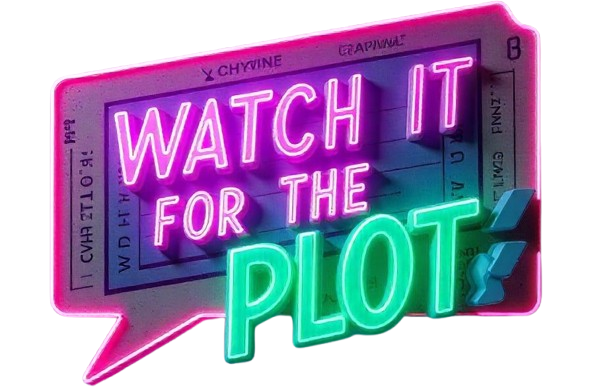The Ultimate Guide to AI Image Generators: Revolutionizing Digital Creativity
Artificial Intelligence (AI) has transformed countless industries, and digital art is no exception. AI image generators have emerged as powerful tools that allow users to create stunning visuals with just a few text prompts. From generating photorealistic portraits to surreal fantasy landscapes, AI-powered tools like DALL·E, MidJourney, and Stable Diffusion are redefining creativity.
In this comprehensive guide, we will explore:
- What is an AI Image Generator?
- How Do AI Image Generators Work?
- Top AI Image Generators in 2024
- Applications of AI-Generated Images
- Ethical and Legal Considerations
- The Future of AI in Image Generation
Let’s dive in!
1. What is an AI Image Generator?
An AI image generator is a tool that uses artificial intelligence, particularly deep learning models, to create images based on text prompts or existing visual inputs. These systems analyze vast datasets of images and learn patterns, styles, and compositions to generate new, unique visuals.
Key Features of AI Image Generators:
- Text-to-Image Generation – Create images from written descriptions.
- Image-to-Image Translation – Modify or enhance existing images.
- Style Transfer – Apply artistic styles (e.g., Van Gogh, cyberpunk) to generated images.
- High Customization – Adjust details like lighting, colors, and composition.
2. How Do AI Image Generators Work?
AI image generators rely on Generative Adversarial Networks (GANs) and Diffusion Models to produce high-quality images.
A. Generative Adversarial Networks (GANs)
- Two neural networks compete:
- Generator: Creates fake images.
- Discriminator: Tries to distinguish between real and AI-generated images.
- Over time, the generator improves until the discriminator can no longer tell the difference.
B. Diffusion Models (e.g., Stable Diffusion, DALL·E 3)
- Gradually add and remove noise from an image to refine details.
- More stable and controllable than GANs, producing higher-resolution images.
C. Transformer-Based Models (e.g., DALL·E, MidJourney)
- Use large language models (LLMs) to understand text prompts.
- Combine language understanding with image synthesis for better accuracy.
3. Top AI Image Generators in 2025
Here are the leading AI image generators revolutionizing digital art:
A. DALL·E 3 (by OpenAI)
- Best for: Hyper-realistic and creative images.
- Key Features:
- Deep integration with ChatGPT for better prompt understanding.
- High-resolution, detailed outputs.
B. MidJourney (by MidJourney Inc.)
- Best for: Artistic and surreal imagery.
- Key Features:
- Exceptional at fantasy, anime, and painterly styles.
- Discord-based interface for community collaboration.
C. Stable Diffusion (by Stability AI)
- Best for: Open-source customization.
- Key Features:
- Free and modifiable (unlike proprietary models).
- Runs locally for privacy-focused users.
D. Adobe Firefly (by Adobe)
- Best for: Professional designers.
- Key Features:
- Seamless integration with Photoshop & Illustrator.
- Ethically trained on licensed images.
E. Runway ML
- Best for: Video and dynamic content.
- Key Features:
- AI-powered video editing and generation.
- Advanced tools for filmmakers.
4. Applications of AI-Generated Images
AI-generated images are being used across multiple industries:
A. Marketing & Advertising
- Create custom ads, banners, and social media visuals instantly.
- Reduce costs on stock photos and graphic designers.
B. Gaming & Entertainment
- Design concept art, characters, and environments faster.
- Generate NFTs and digital collectibles.
C. E-Commerce & Fashion
- Produce AI-generated product mockups.
- Virtual try-ons and personalized designs.
D. Education & Research
- Visualize complex concepts (e.g., medical illustrations, historical reconstructions).
E. Personal Creativity
- Digital artists use AI for inspiration and rapid prototyping.
- Hobbyists create unique wallpapers, avatars, and memes.
5. Ethical and Legal Considerations
While AI image generators offer immense potential, they also raise concerns:
A. Copyright & Ownership
- Who owns AI-generated images? (Currently a legal gray area.)
- Training data issues: Some AI models use copyrighted images without permission.
B. Deepfakes & Misinformation
- AI can create fake celebrity images or misleading propaganda.
- Solutions like watermarking and detection tools are being developed.
C. Job Displacement
- Will AI replace human artists?
- Most experts believe AI will augment, not replace, human creativity.
6. The Future of AI Image Generation
The evolution of AI image generators is accelerating:
A. Real-Time Generation
- Tools will generate high-quality images in seconds with minimal input.
B. 3D & Interactive AI Art
- AI will create 3D models, animations, and VR environments.
C. Personalized AI Assistants
- Imagine an AI that learns your artistic style and refines outputs accordingly.
D. Ethical AI & Regulation
- Governments may enforce strict guidelines on AI-generated content.
The Role of AI Image Generators in Democratizing Art
One of the most significant impacts of AI image generators is their ability to democratize art creation. Traditionally, producing high-quality digital art required years of training, expensive software, and advanced technical skills. Now, with AI tools like MidJourney and Stable Diffusion, anyone—regardless of artistic background—can bring their ideas to life with just a few keystrokes. This shift has opened doors for entrepreneurs, content creators, and hobbyists who previously lacked the resources to commission or create professional visuals. Additionally, AI-generated art is fostering a new wave of hybrid creators, where humans and AI collaborate, blending traditional techniques with machine-generated enhancements. As these tools become more intuitive, we may see an explosion of independent digital artists and niche content creators who leverage AI to stand out in a crowded digital landscape.
Challenges and the Path Forward for AI-Generated Art
Despite their potential, AI image generators still face technical and societal hurdles. One major challenge is bias in training data, where AI models may reinforce stereotypes or produce culturally insensitive outputs due to imbalanced datasets. Another issue is over-reliance on AI, which could lead to a decline in fundamental artistic skills if creators depend too heavily on automation. To address these concerns, developers are working on more transparent AI models, ethical training practices, and user-controlled customization. Meanwhile, artists and policymakers are pushing for clearer regulations around AI-generated content to protect intellectual property while encouraging innovation. The future of AI in art will likely be shaped by a balance between technological advancement and responsible usage, ensuring that these tools empower creativity without undermining human artistry.
Conclusion
AI image generators are reshaping digital creativity, making professional-grade art accessible to everyone. While challenges like copyright issues and deepfakes remain, the benefits—speed, affordability, and endless creativity—are undeniable.
As AI continues to evolve, we can expect even more groundbreaking innovations in visual content creation. Whether you’re an artist, marketer, or hobbyist, embracing AI image generation can unlock new realms of possibility.
What’s next? Try out tools like DALL·E 3 or MidJourney and start creating your own AI masterpieces today!
FAQ
Q: Are AI-generated images free to use?
A: It depends on the platform. Some allow commercial use, while others restrict it.
Q: Can AI replace human artists?
A: No—AI is a tool that enhances creativity but lacks human emotion and originality.
Q: How can I detect AI-generated images?
A: Tools like Hive AI Detector and Forensic AI analyzers can help identify AI-made images.
Would you like recommendations on the best AI tools for your needs? Let me know in the comments! 🚀



